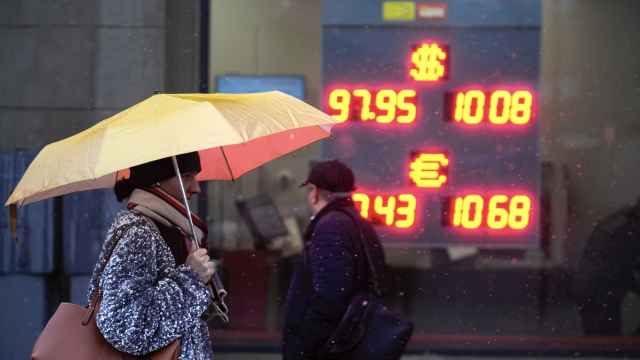Why has quantitative easing coexisted with price stability in the U.S.? Or, as I often hear, "Why has the Federal Reserve's printing of so much money not caused higher inflation?"
Inflation has certainly been very low. During the past five years, the consumer price index has increased at an annual rate of just 1.5 percent. The Fed's preferred measure of inflation — the price index for personal consumption expenditures, excluding food and energy — also rose at a rate of just 1.5 percent.
By contrast, the Federal Reserve's purchases of long-term bonds during this period has been unprecedentedly large. It bought more than $2 trillion of U.S. Treasury bonds and mortgage-backed securities, nearly 10 times the annual rate of bond purchases during the previous decade. In the last year alone, the stock of bonds on the Federal Reserve's balance sheet has risen more than 20 percent.
The historical record shows that rapid monetary growth does fuel high inflation. That was very clear during Germany's hyperinflation in the 1920s and Latin America's in the 1980s. But even more moderate shifts in U.S. monetary growth rate have translated into corresponding shifts in the rate of inflation. In the 1970s, U.S. money supply grew at an average annual rate of 9.6 percent, the highest rate in the previous half-century; inflation averaged 7.4 percent, also a half-century high. In the 1990s, annual monetary growth averaged only 3.9 percent, and the average inflation rate was just 2.9 percent.
That is why the absence of any inflationary response to the Federal Reserve's massive bond purchases in the past five years seems so puzzling. But the puzzle disappears when we recognize that quantitative easing is not the same thing as "printing money" or, more accurately, increasing the stock of money.
The stock of money that relates most closely to inflation consists primarily of the deposits that businesses and households have at commercial banks. Traditionally, greater amounts of Federal Reserve bond-buying have led to faster growth of this money stock. But a fundamental change in the Federal Reserve's rules in 2008 broke the link between its bond buying and the subsequent size of the money stock. As a result, it has bought a massive amount of bonds without causing the stock of money — and thus the rate of inflation — to rise.
The link between bond purchases and the money stock depends on the role of commercial banks' "excess reserves." When the Federal Reserve buys U.S. Treasury bonds or other assets like mortgage-backed securities, it creates "reserves" for the commercial banks, which the banks deposit at the Federal Reserve itself.
Commercial banks are required to hold reserves equal to a share of their checkable deposits. Since reserves in excess of the required amount did not earn any interest from the Federal Reserve before 2008, commercial banks had an incentive to lend to households and businesses until the resulting growth of deposits used up all of those excess reserves. Those increased deposits at commercial banks were, by definition, an increase in the relevant stock of money.
An increase in bank loans allows households and businesses to increase their spending. That extra spending means a higher level of nominal gross domestic product — output at market prices. Some of the increase in nominal GDP takes the form of higher real — inflation-adjusted — GDP, while the rest shows up as inflation. That is how Federal Reserve bond purchases have historically increased the stock of money — and the rate of inflation.
The link between Federal Reserve bond purchases and the subsequent growth of the money stock changed after 2008, because the Federal Reserve began to pay interest on excess reserves. The interest rate on these totally safe and liquid deposits induced the banks to maintain excess reserves at the Federal Reserve instead of lending and creating deposits to absorb the increased reserves, as they would have done before 2008.
As a result, the volume of excess reserves held at the Federal Reserve increased dramatically from less than $2 billion in 2008 to $1.8 trillion now. But the new Federal Reserve policy of paying interest on excess reserves meant that this increased availability of excess reserves did not lead after 2008 to much faster deposit growth and a much larger stock of money.
The size of the broad money stock, known as M2, grew at an average rate of just 6.2 percent a year from the end of 2008 to the end of 2012. While nominal GDP generally rises over long periods of time at the same rate as the money stock, with interest rates very low and declining, households and institutions were willing to hold more money relative to total nominal GDP after 2008. So, while M2 grew by more than 6 percent, nominal GDP grew by just 3.5 percent, and the GDP price index rose by only 1.7 percent.
So it is not surprising that inflation has remained so moderate — indeed, lower than in any decade since the end of World War II. It is also not surprising that quantitative easing has done so little to increase nominal spending and real economic activity.
The absence of significant inflation in the past few years does not mean that it won't rise in the future. When businesses and households eventually increase their demand for loans, commercial banks that have adequate capital can meet that demand with new lending without running into the limits that might otherwise result from inadequate reserves. The resulting growth of spending by businesses and households might be welcome at first, but it could soon become a source of unwanted inflation.
The Federal Reserve could, in principle, limit inflationary lending by raising the interest rate on excess reserves or by using open-market operations to increase the short-term federal funds interest rate. But the Federal Reserve may hesitate to act or may act with insufficient force, owing to its dual mandate to focus on employment as well as price stability.
That outcome is more likely if high rates of long-term unemployment and underemployment persist even as the inflation rate rises. And that is why investors are right to worry that inflation could return, even if the Federal Reserve's massive bond purchases in recent years have not brought it about.
Martin Feldstein, professor of economics at Harvard University and president emeritus of the National Bureau of Economic Research, chaired U.S. President Ronald Reagan's Council of Economic Advisers from 1982 to 1984. © Project Syndicate
A Message from The Moscow Times:
Dear readers,
We are facing unprecedented challenges. Russia's Prosecutor General's Office has designated The Moscow Times as an "undesirable" organization, criminalizing our work and putting our staff at risk of prosecution. This follows our earlier unjust labeling as a "foreign agent."
These actions are direct attempts to silence independent journalism in Russia. The authorities claim our work "discredits the decisions of the Russian leadership." We see things differently: we strive to provide accurate, unbiased reporting on Russia.
We, the journalists of The Moscow Times, refuse to be silenced. But to continue our work, we need your help.
Your support, no matter how small, makes a world of difference. If you can, please support us monthly starting from just $2. It's quick to set up, and every contribution makes a significant impact.
By supporting The Moscow Times, you're defending open, independent journalism in the face of repression. Thank you for standing with us.
Remind me later.






